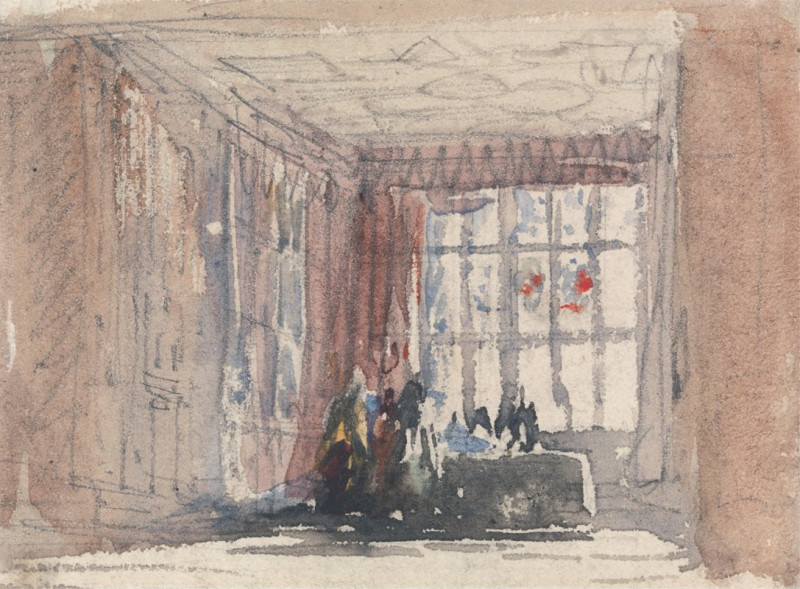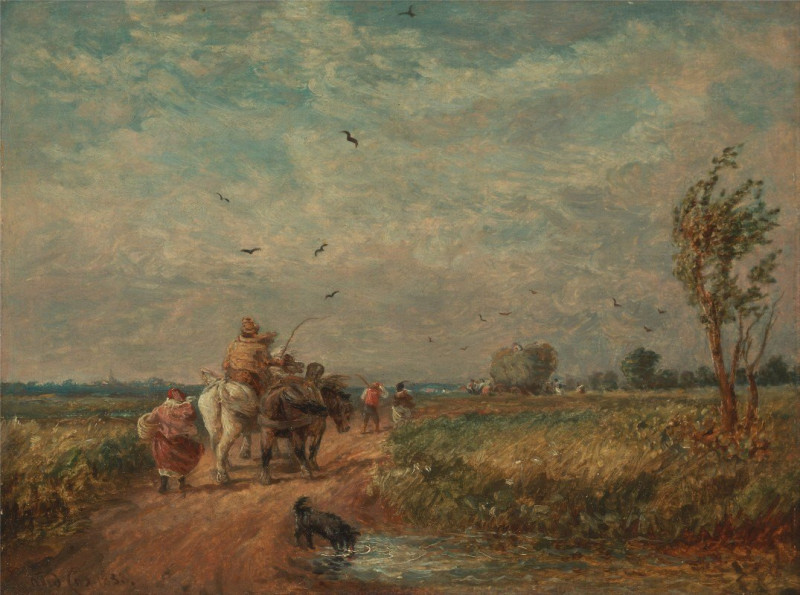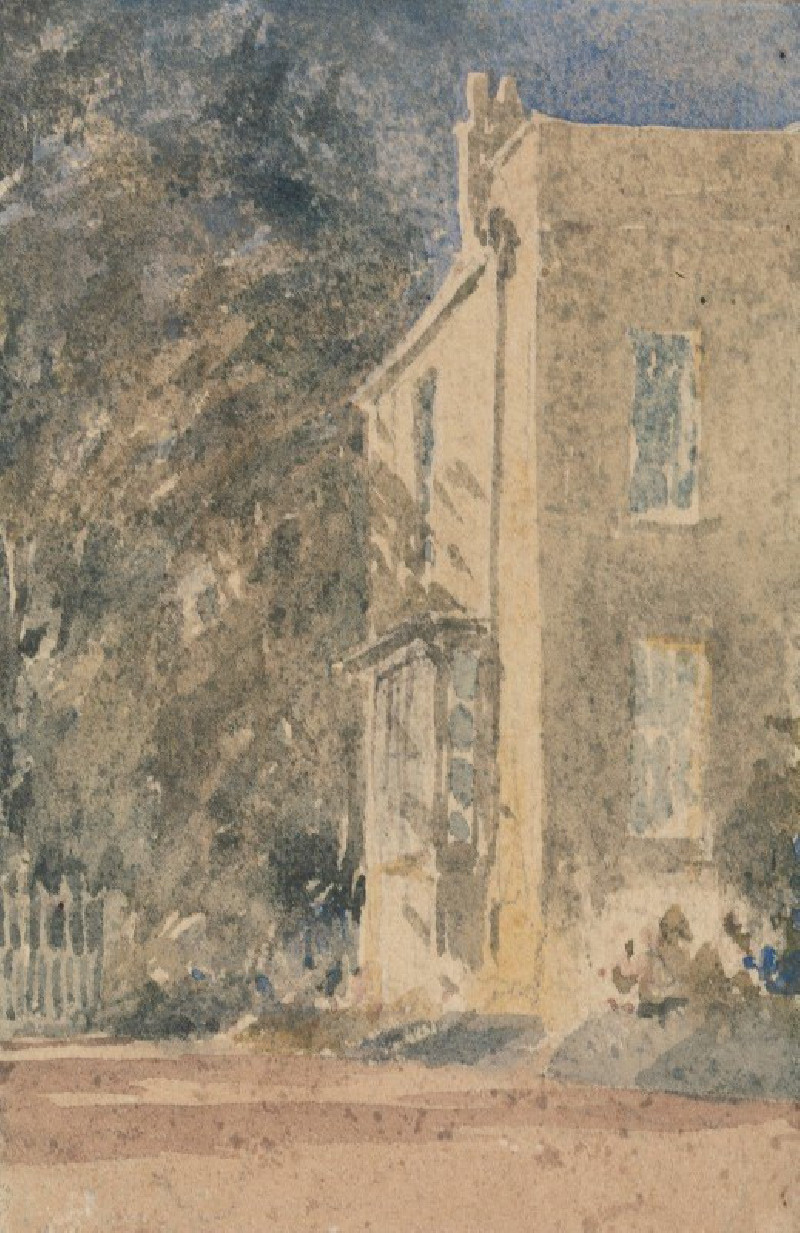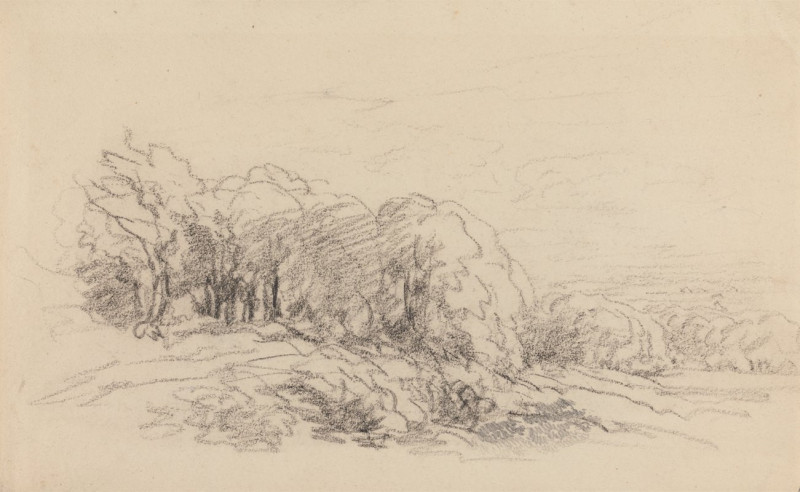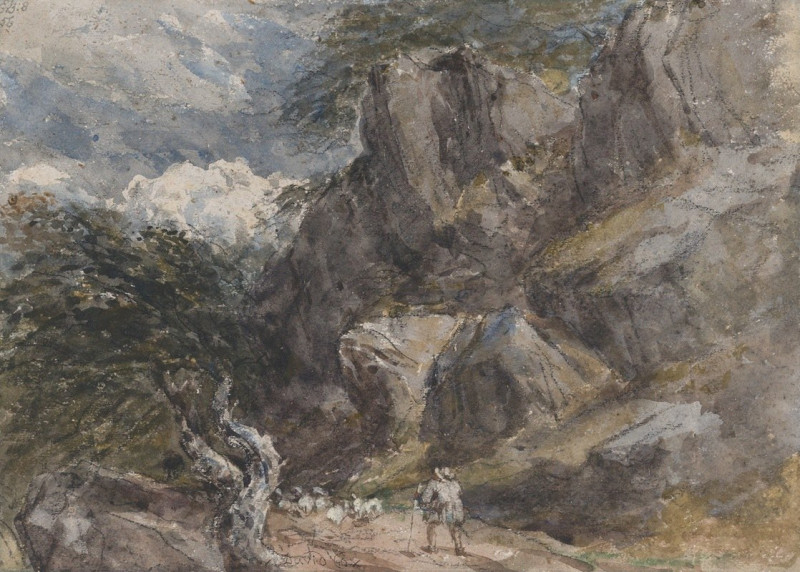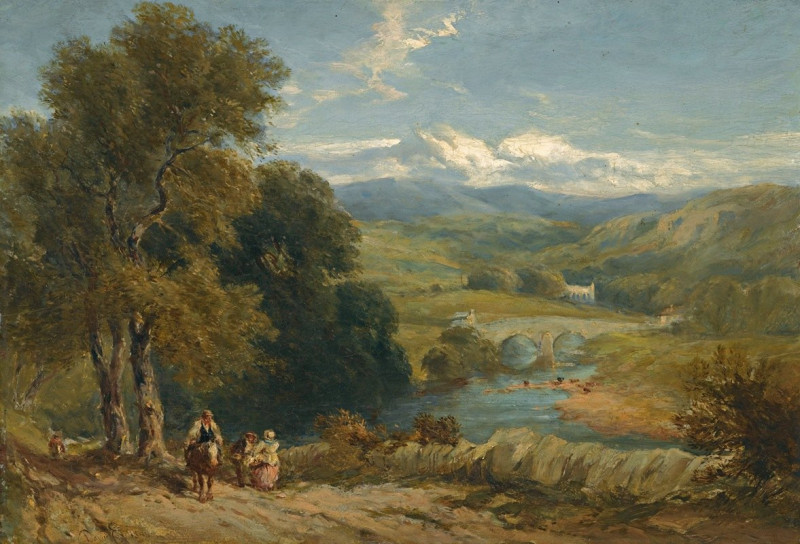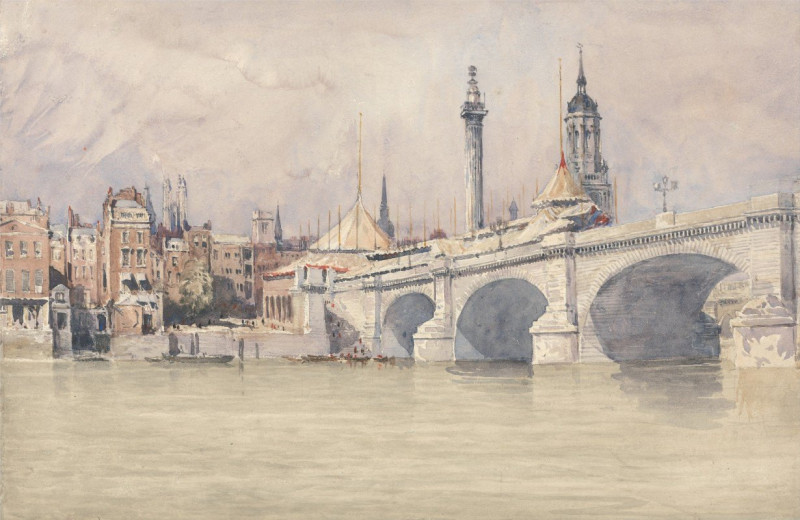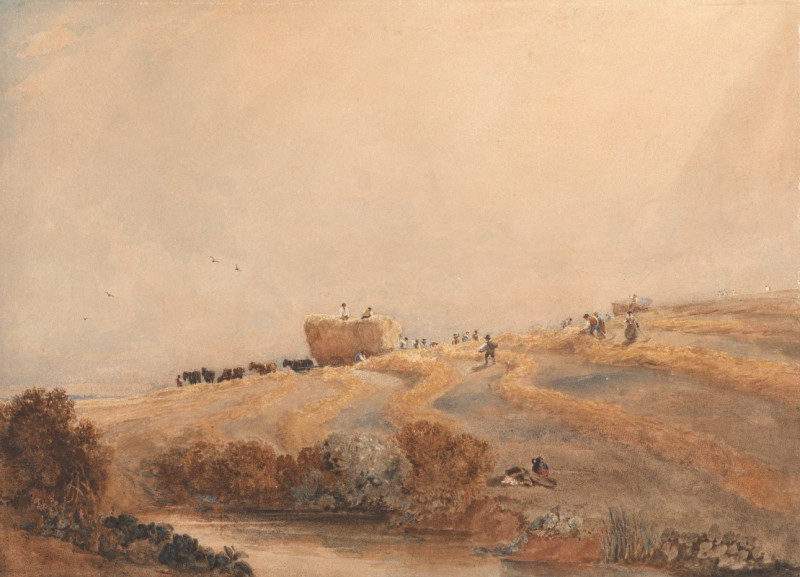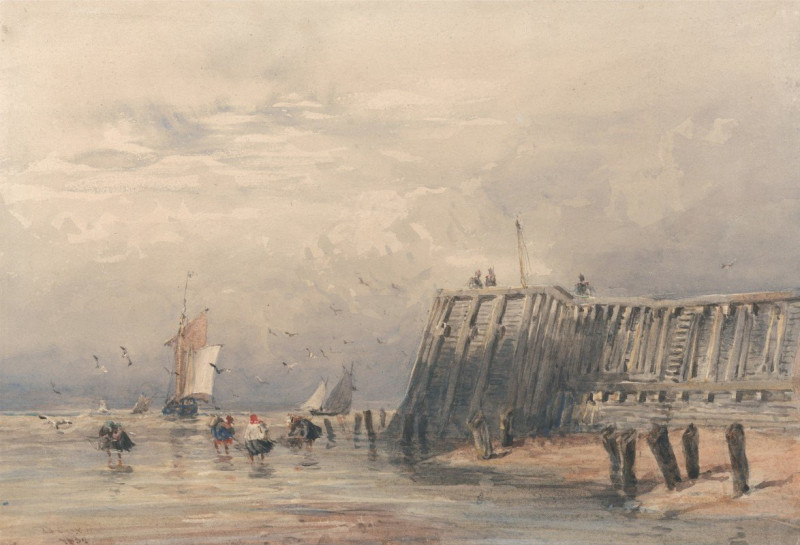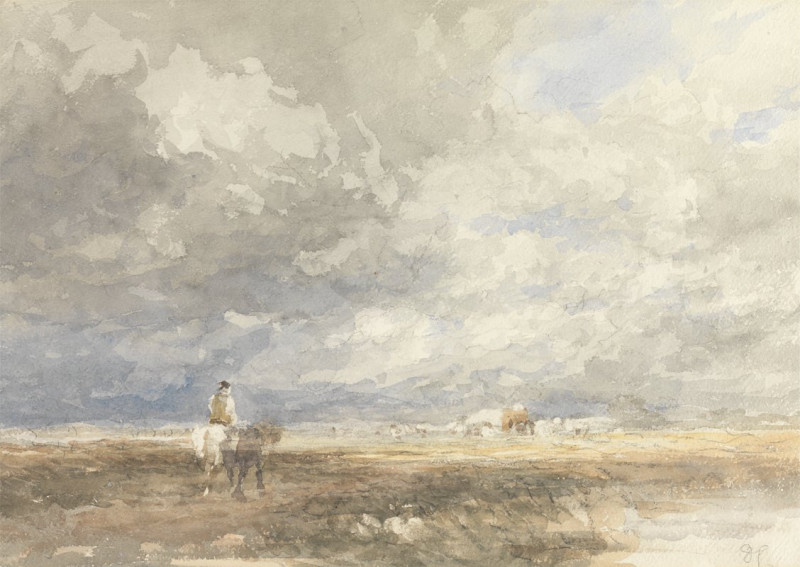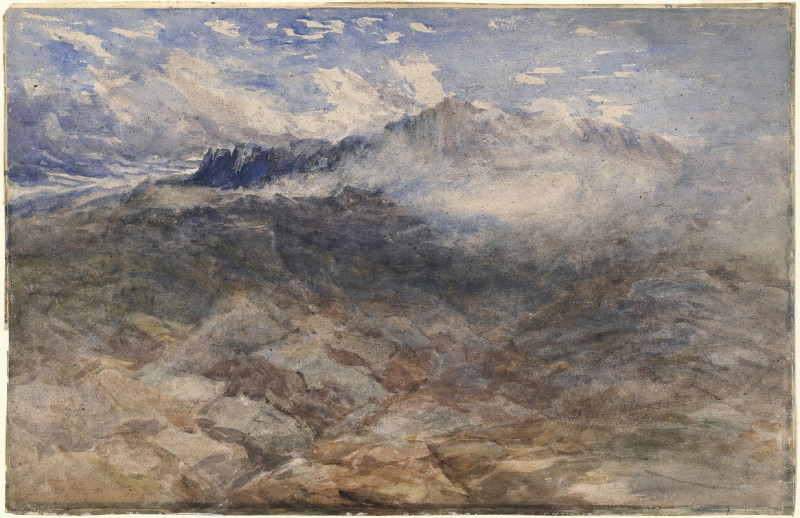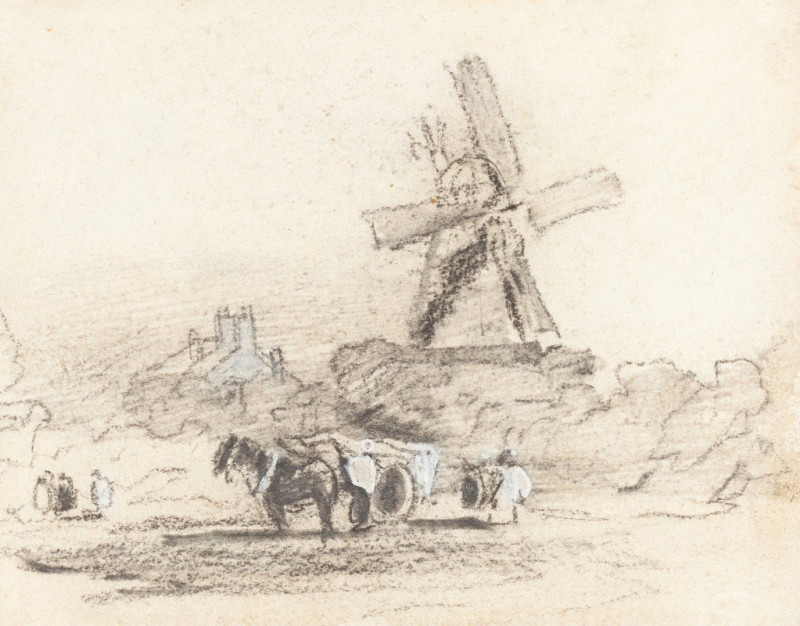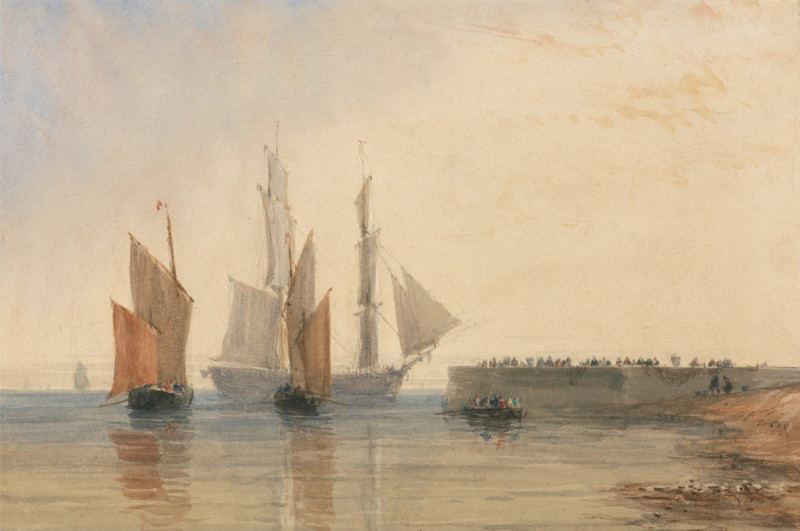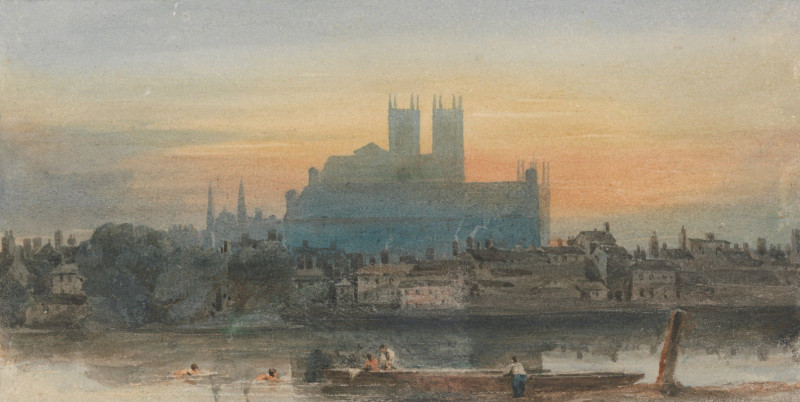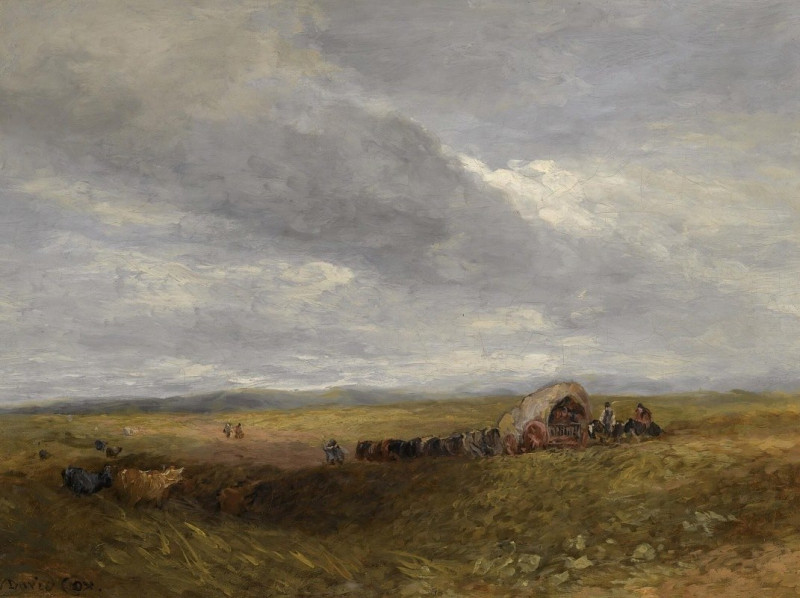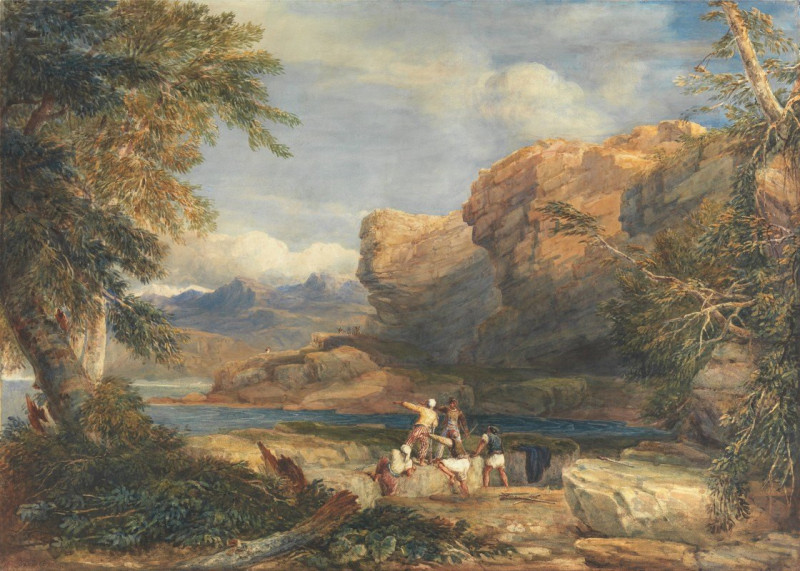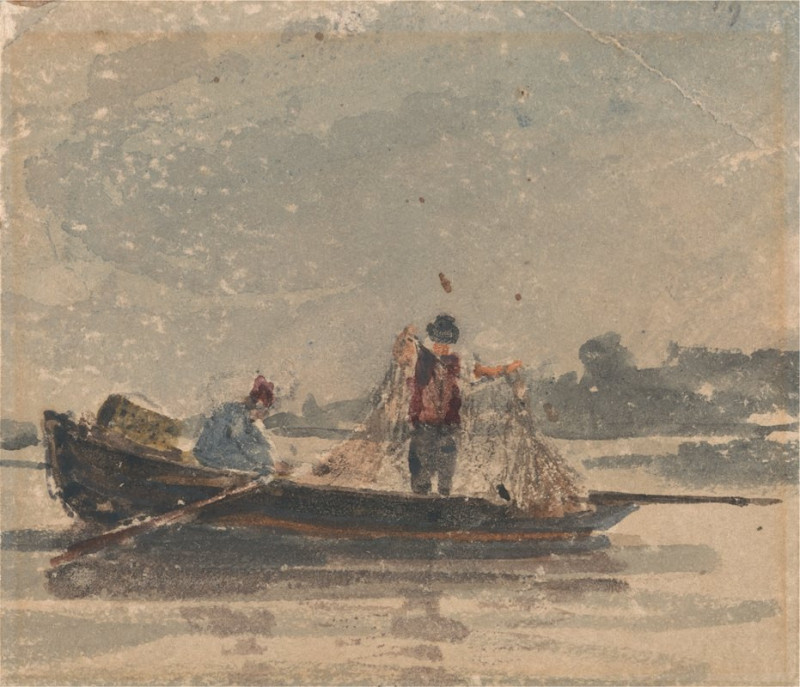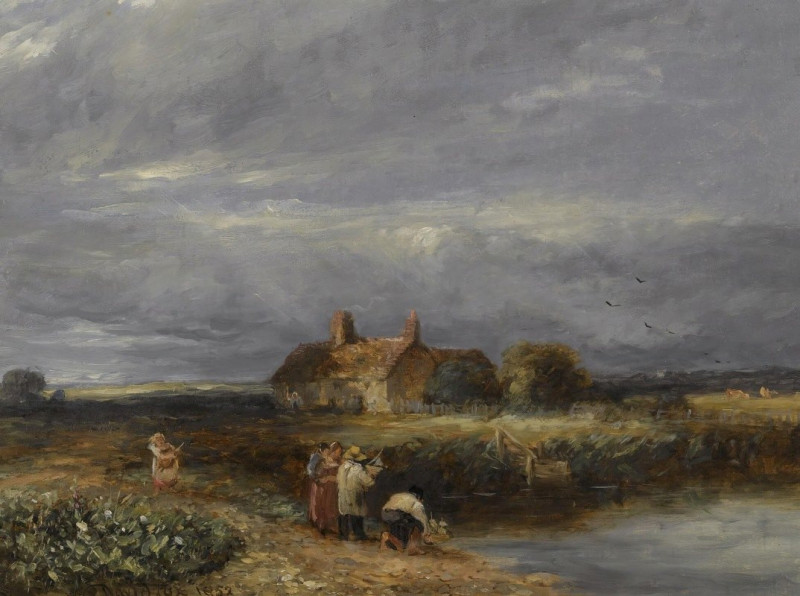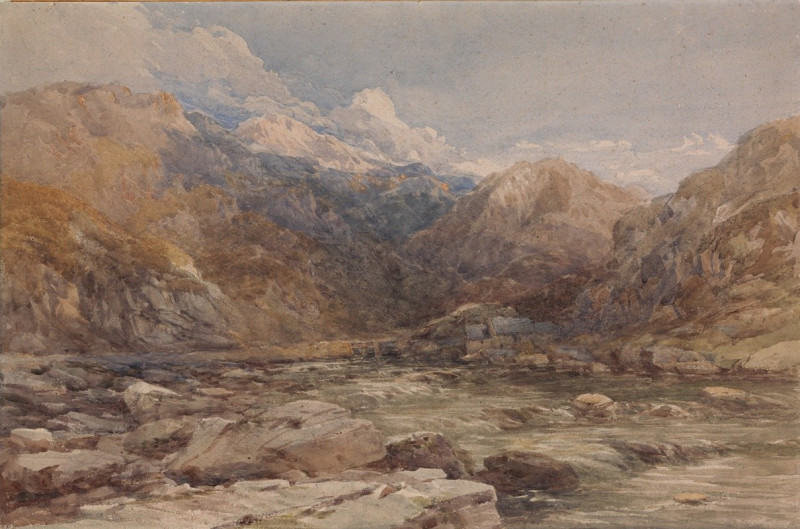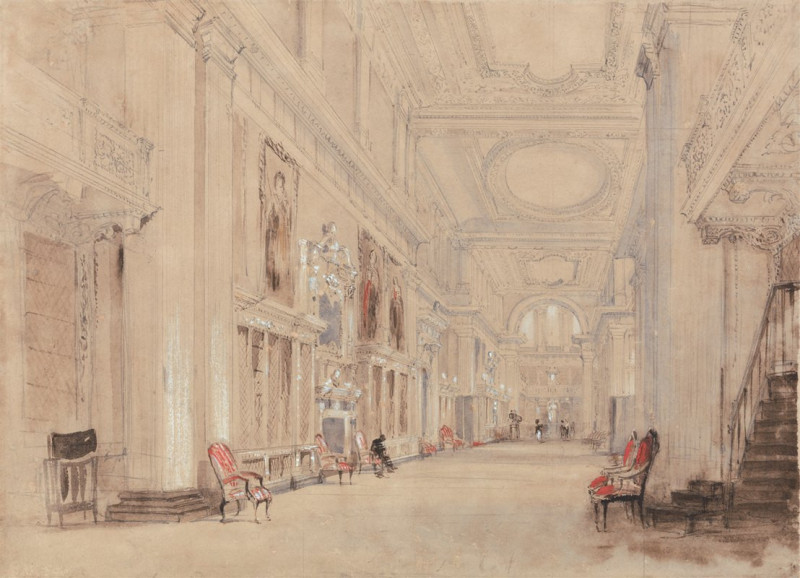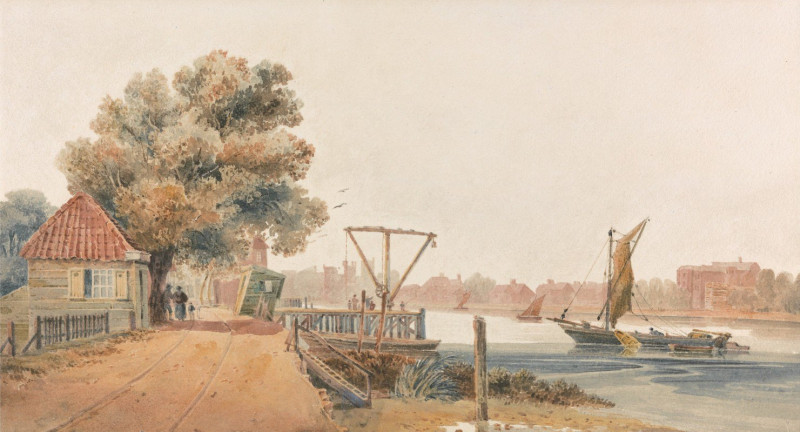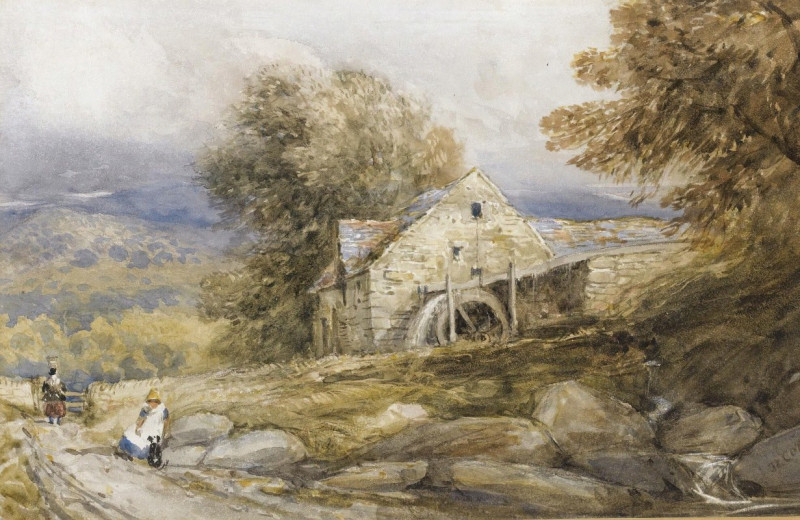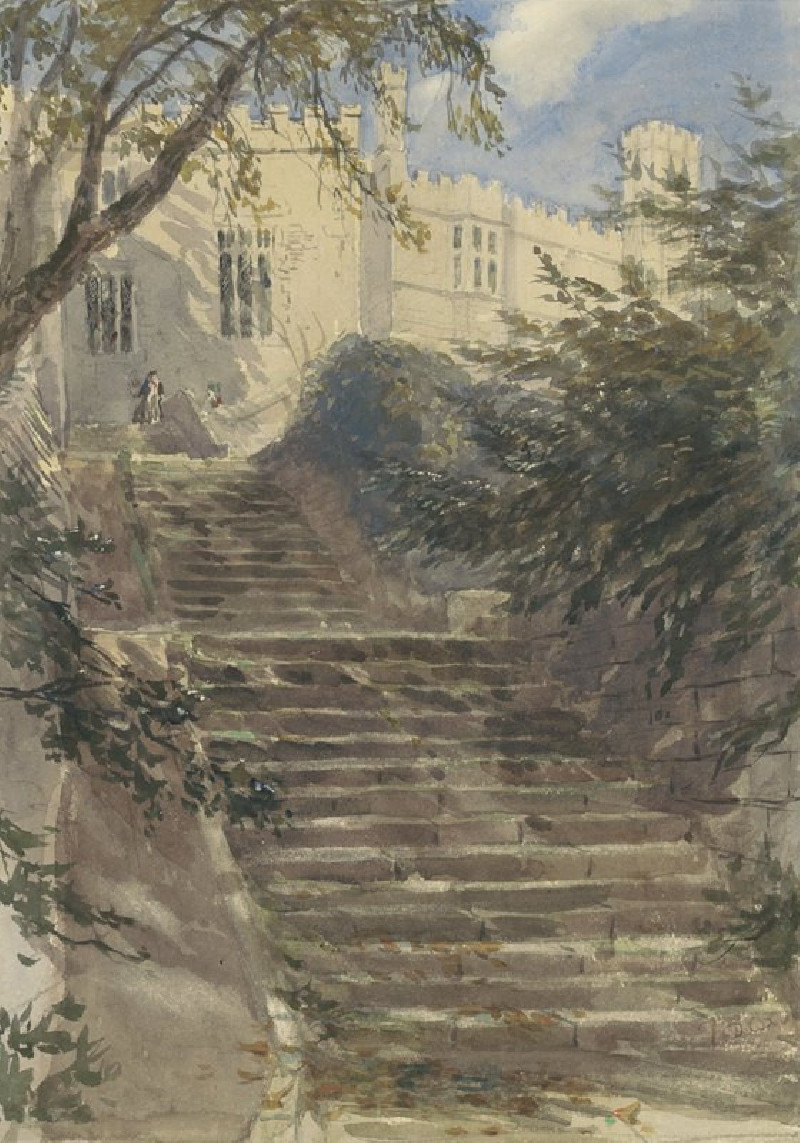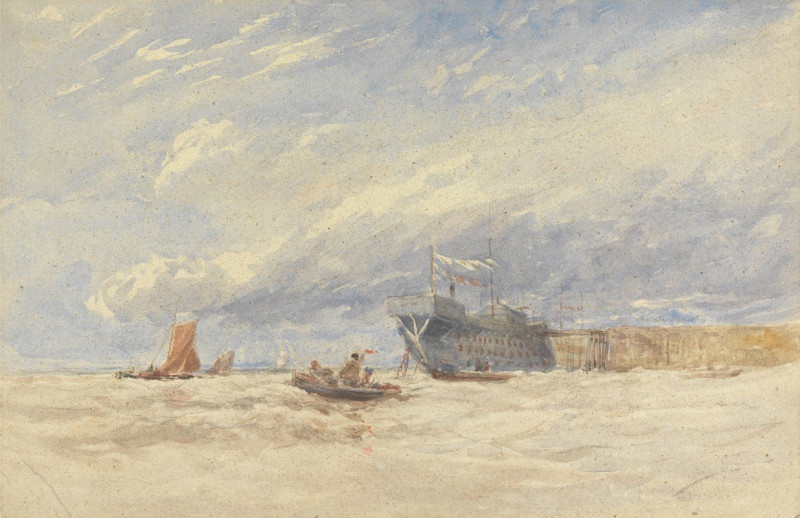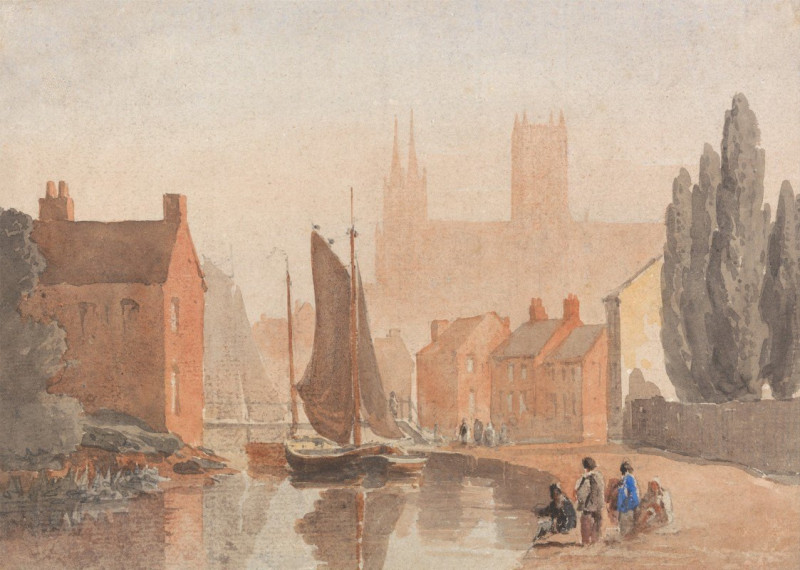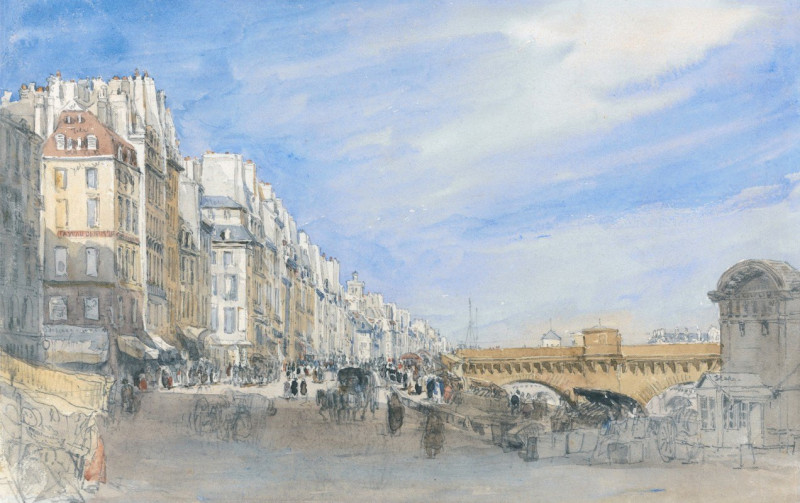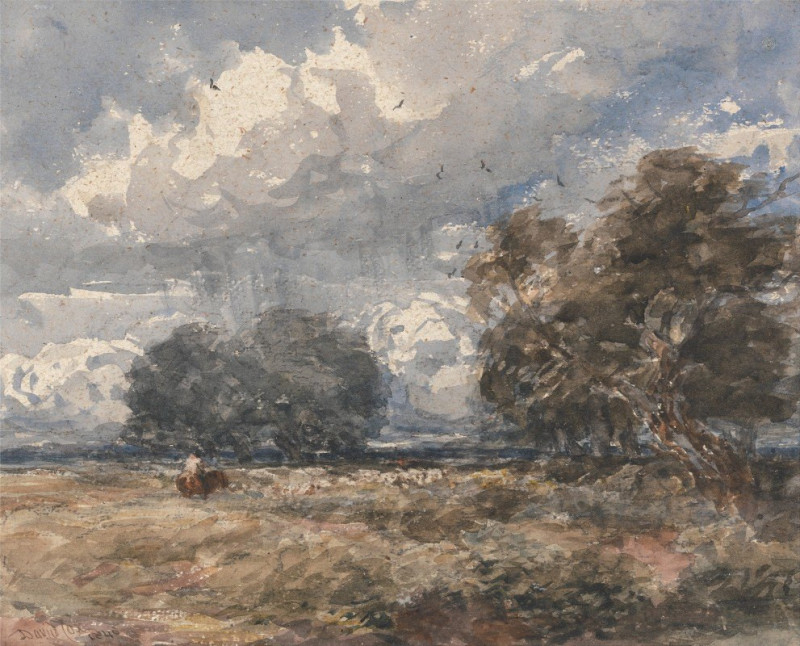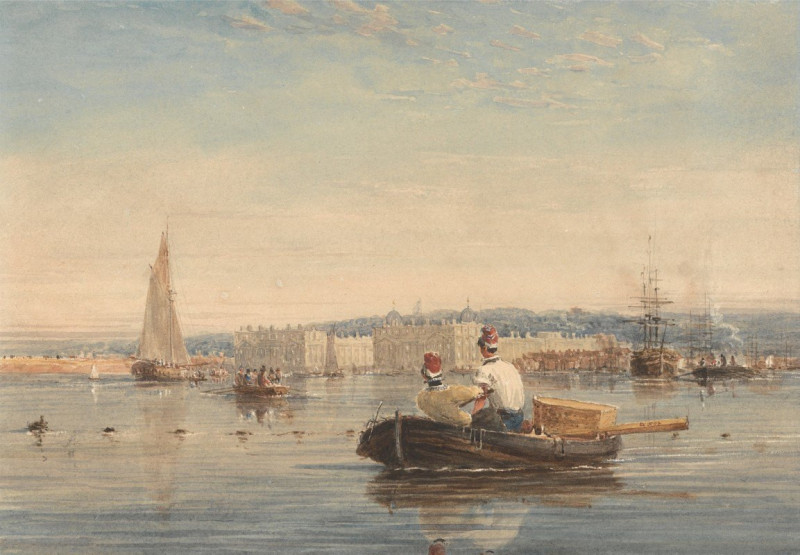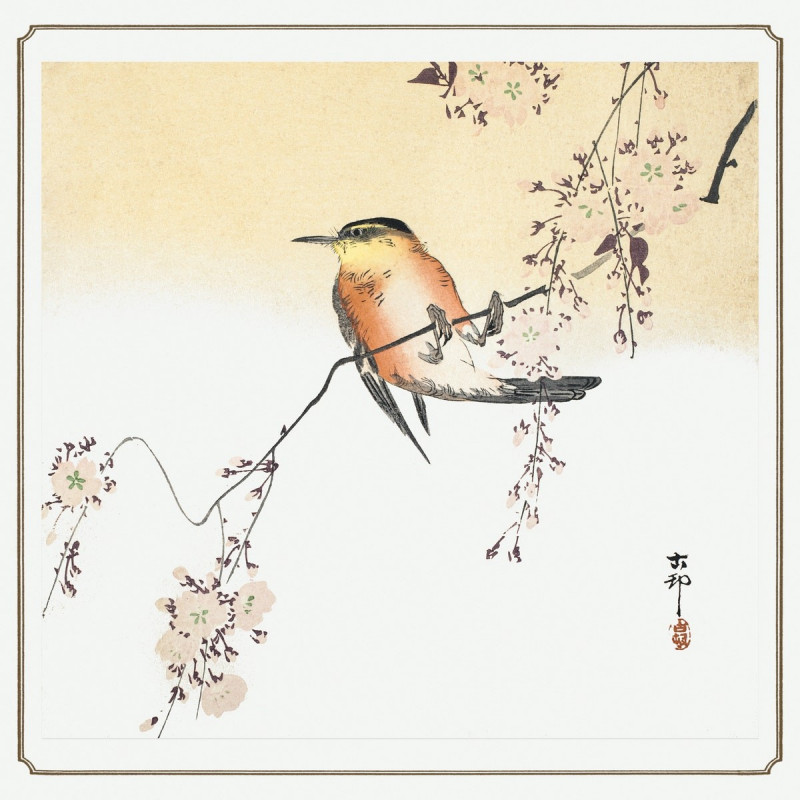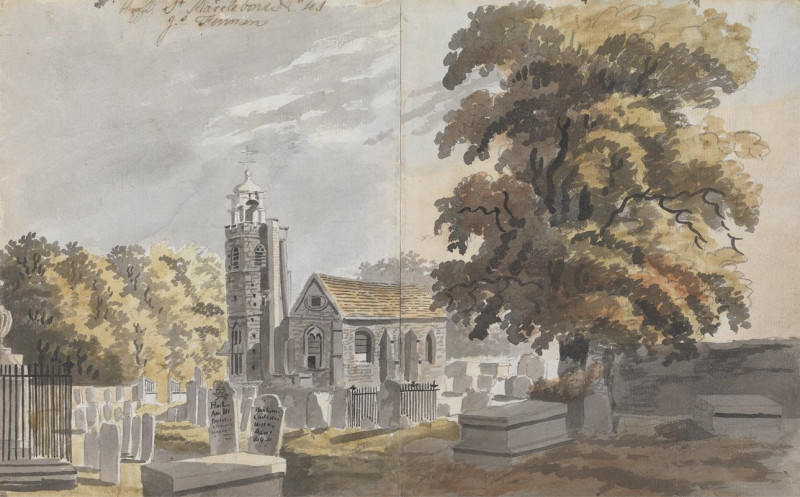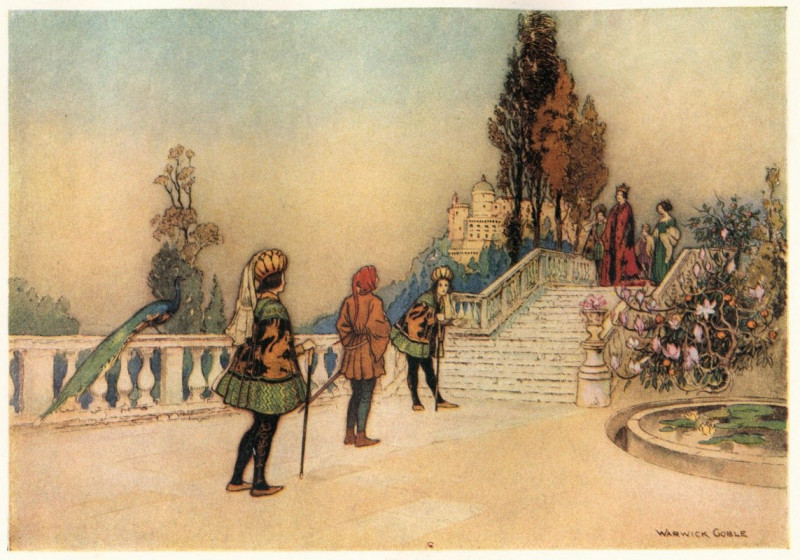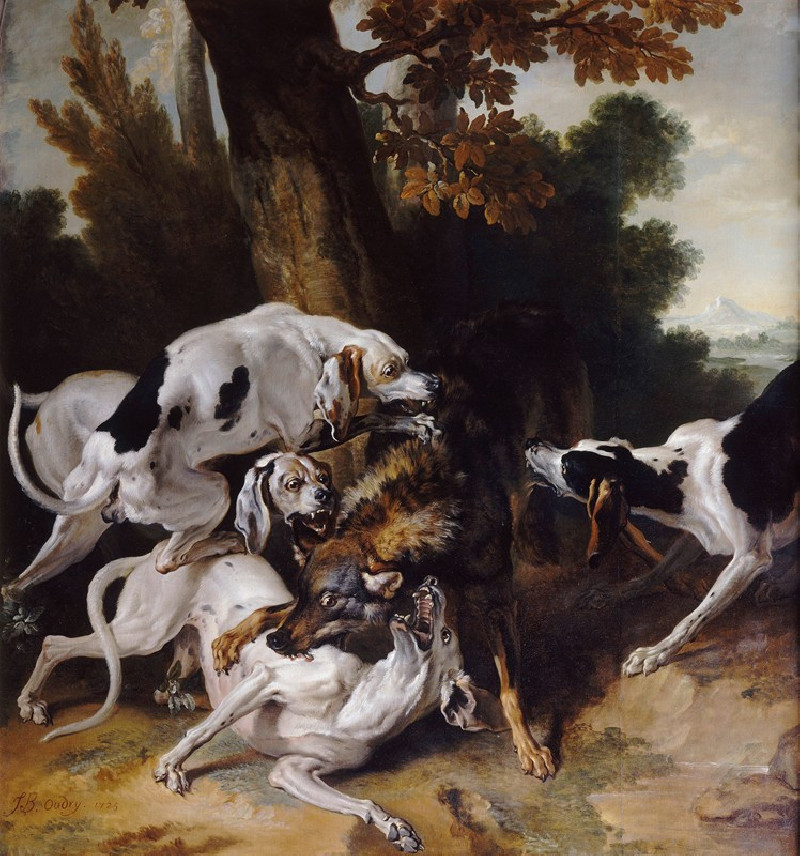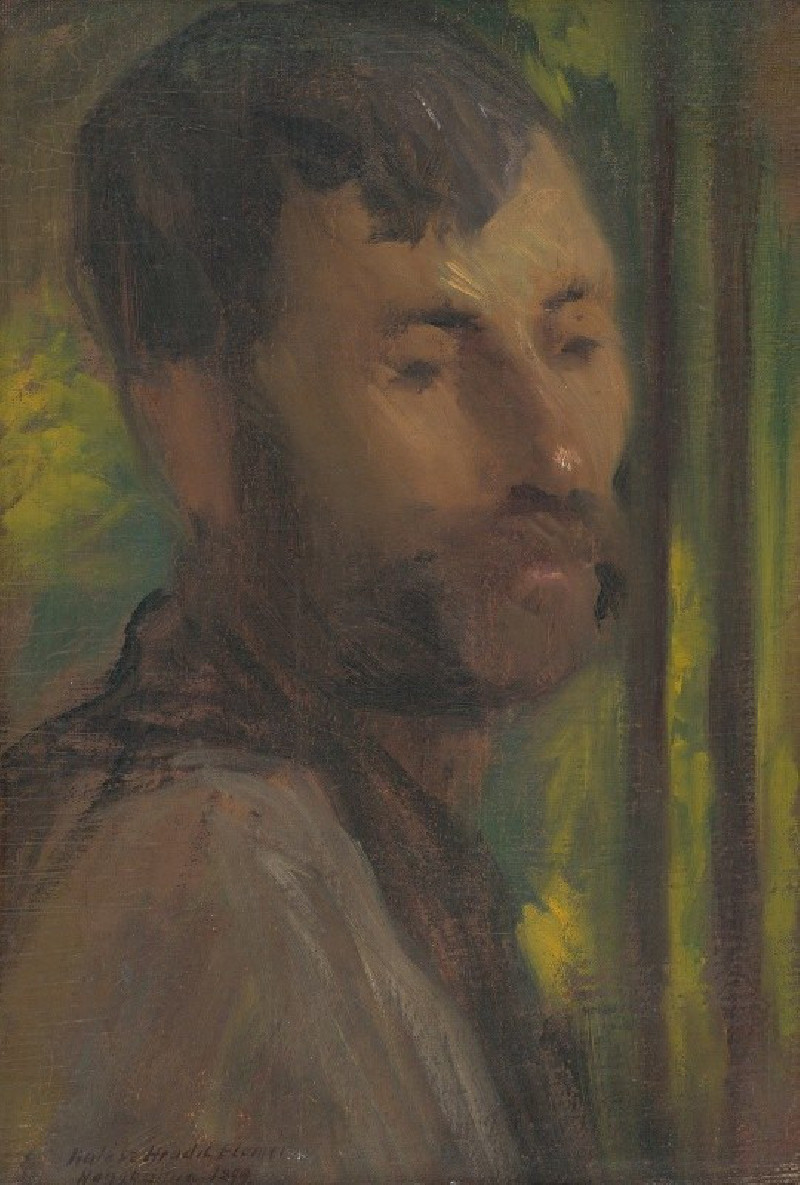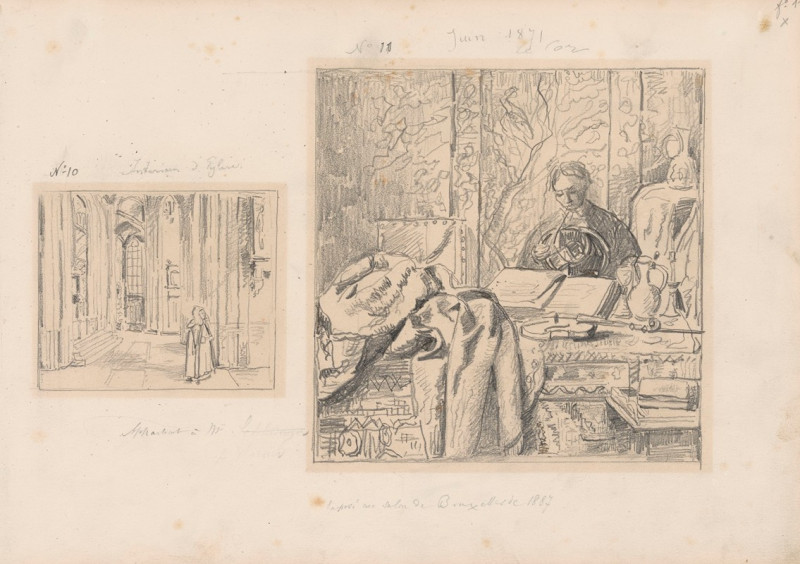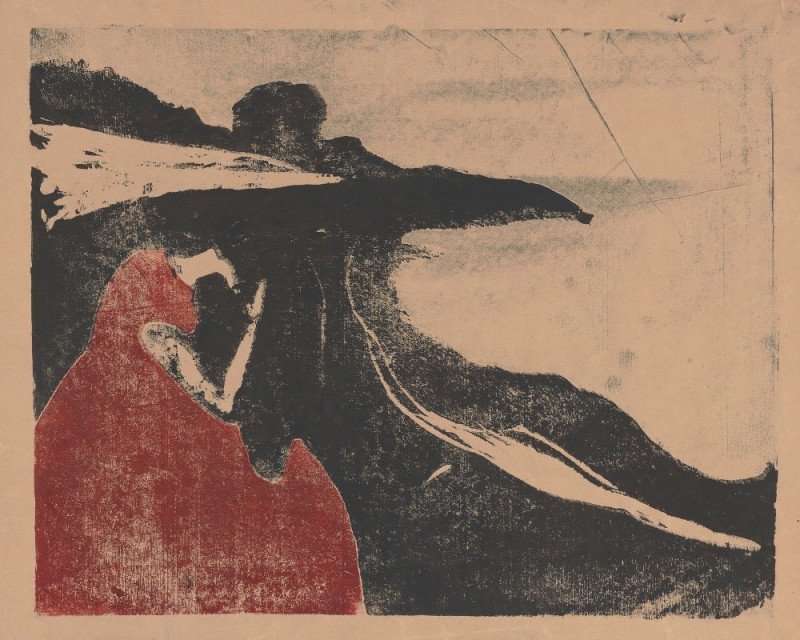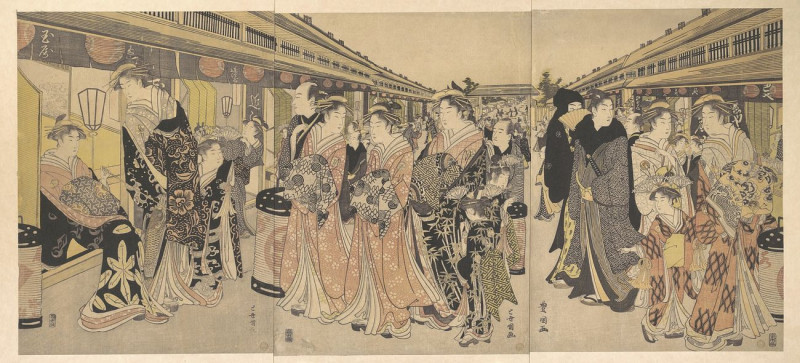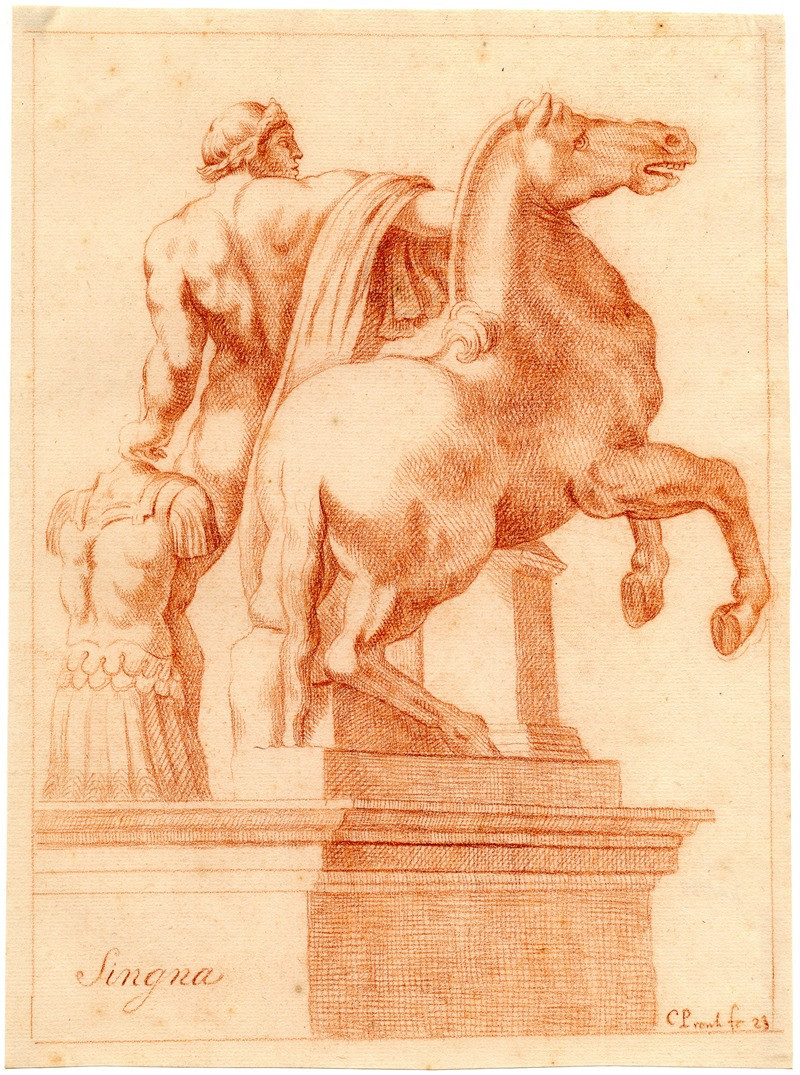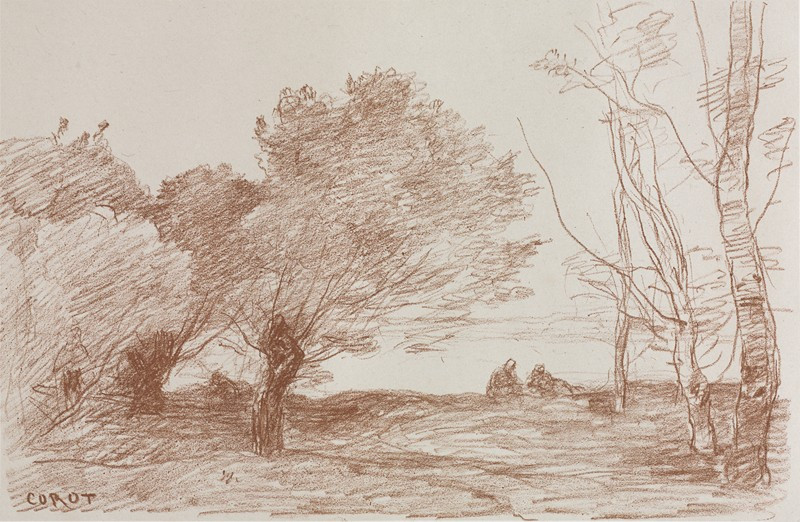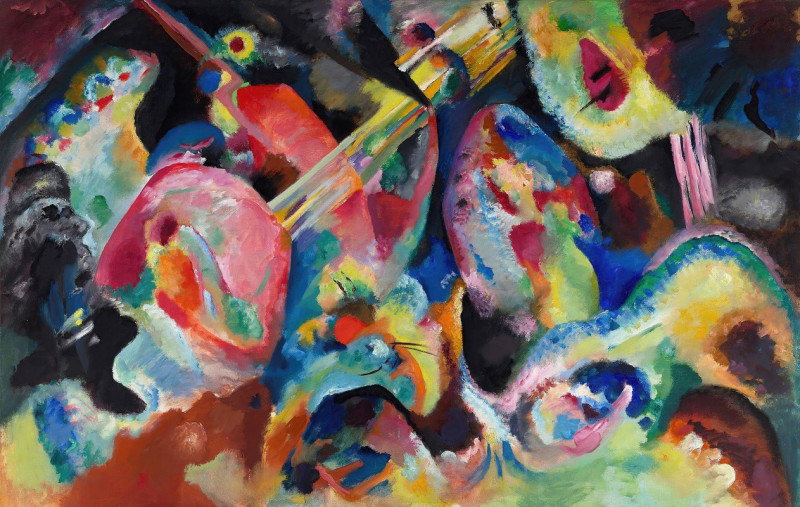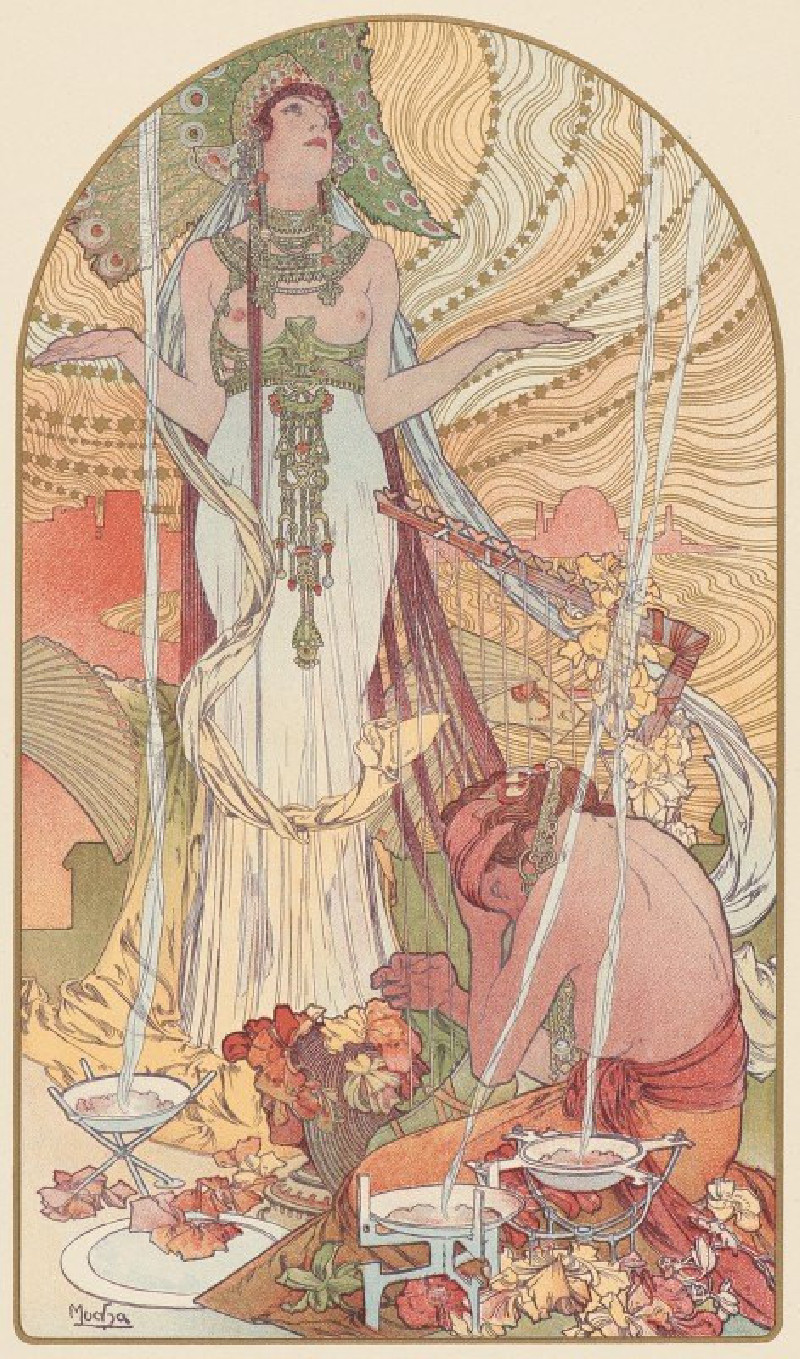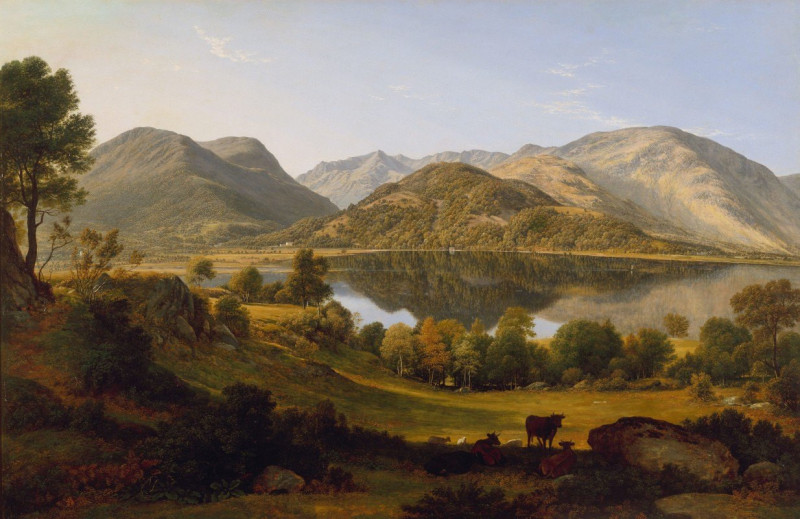A Tudor Room with Figures (mid to late 1830s)
Technique: Giclée quality print
Recommended by our customers
More about this artwork
"A Tudor Room with Figures" is a captivating watercolor by the acclaimed artist David Cox, painted in the mid to late 1830s. This delicate work exhibits a profound balance of light and shadow, infused with a sense of bygone elegance that typified the Tudor style of interior design. In this intimate scene, spectators are drawn into an ornately adorned room. The focus centers on a lavishly draped window that floods the space with soft, diffused light, casting gentle illuminations across the wooden floor and the rich tapestries that adorn the walls.Central to the composition are the figures, skillfully rendered with a few brisk strokes, emanating a vibrant dynamic against the calm, muted tones of their surroundings. These figures, though not detailed, evoke a narrative of everyday Tudor life, possibly a family or a small gathering of individuals immersed in quiet conversation or contemplation. The loose and expressive technique employed by Cox not only highlights the transient nature of light but also the fleeting moments of human interaction, encapsulating a scene that feels both historical and strikingly immediate.
Delivery
Returns
David Cox (29 April 1783 – 7 June 1859) was an English landscape painter, one of the most important members of the Birmingham School of landscape artists and an early precursor of Impressionism.
He is considered one of the greatest English landscape painters, and a major figure of the Golden age of English watercolour.
Although most popularly known for his works in watercolour, he also painted over 300 works in oil towards the end of his career, now considered "one of the greatest, but least recognised, achievements of any British painter."
His son, known as David Cox the Younger (1809–1885), was also a successful artist.

